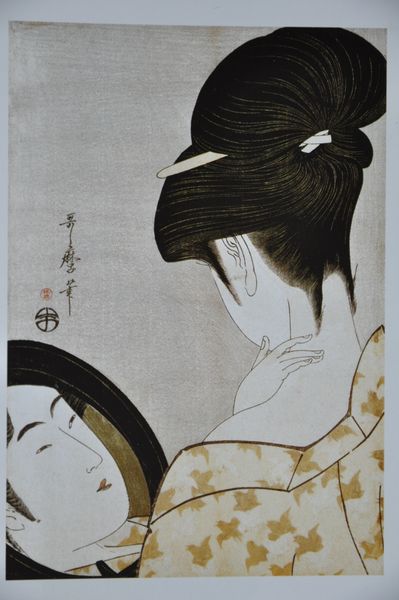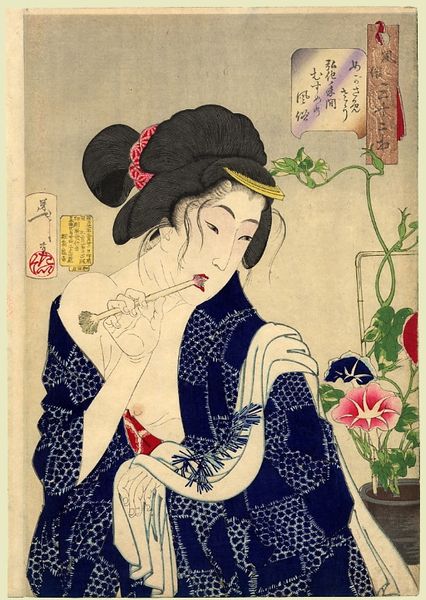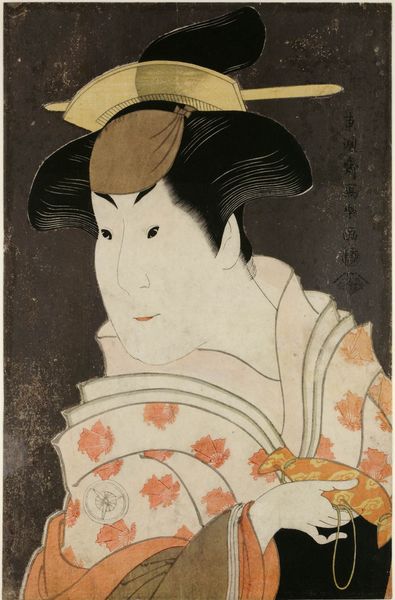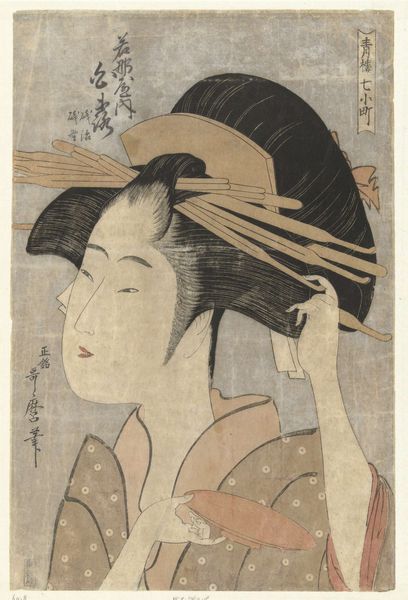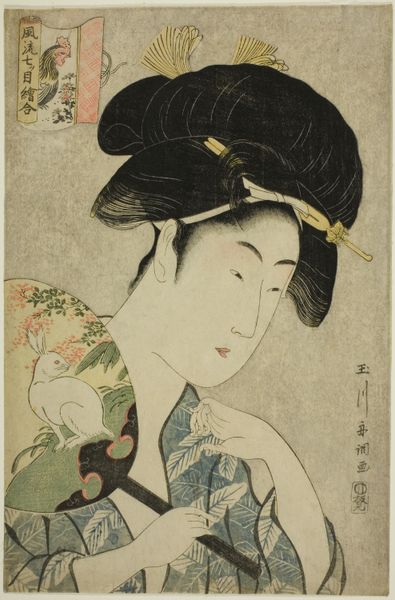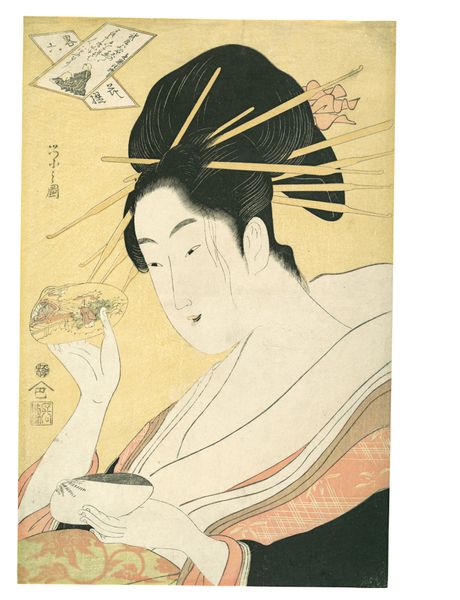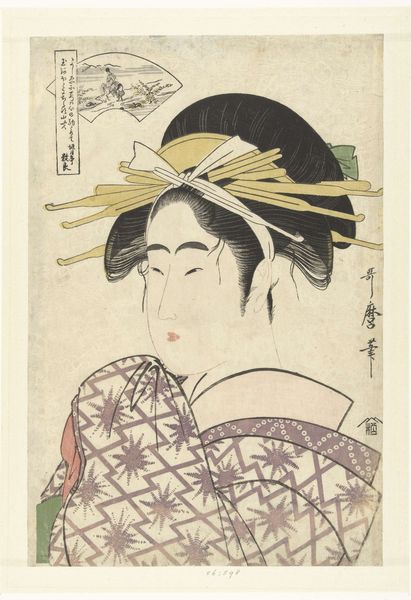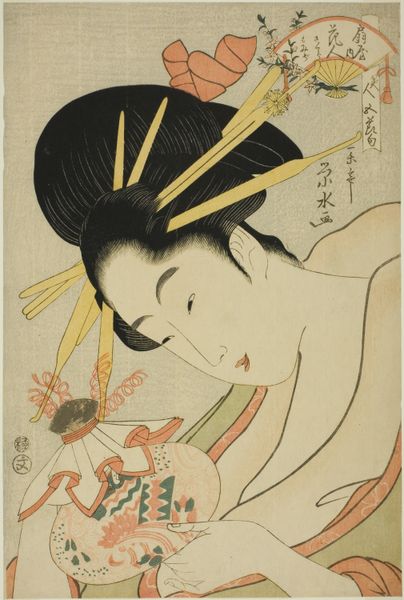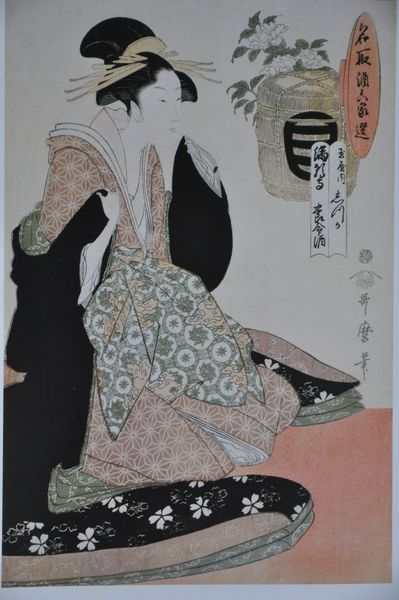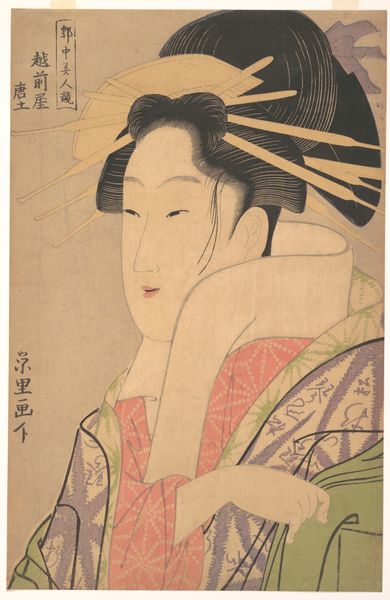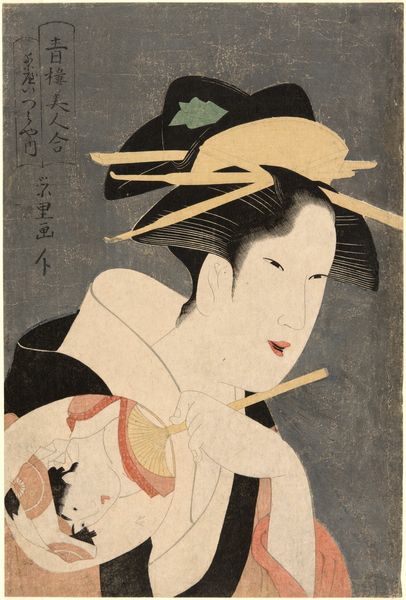
print, woodblock-print
#
portrait
# print
#
asian-art
#
ukiyo-e
#
woodblock-print
Copyright: Public domain
Editor: This is "From the series Kasen koi no bu," a woodblock print made in 1794 by Kitagawa Utamaro. The woman seems lost in thought, maybe even a little melancholic. What cultural meanings might we find in this work? Curator: The downcast eyes, the intricate hairstyle, and the subtly patterned kimono are laden with meaning. Consider the weight placed on female beauty and social graces in Edo period Japan. These were visual signifiers of status and cultivation. What stories do you think her comb and meticulously arranged hair might tell? Editor: That her appearance was carefully constructed, maybe to attract attention? It feels very performative. Curator: Precisely. Ukiyo-e prints weren't just portraits; they were carefully constructed images, almost like archetypes. Utamaro masterfully captured the idealized feminine form, and by extension, societal expectations of women at that time. Are there symbols here, beyond her attire, that might suggest something about her emotional state? Editor: I notice the fan she’s holding has flowers on it, perhaps a reference to fleeting beauty? And what about her tiny pout, or downturned mouth? Curator: Good observation! Flowers often represent the ephemeral nature of life. Utamaro is not simply presenting beauty, but reminding us of its transient nature, perhaps echoing the fleeting nature of love, indicated in the title. What enduring idea persists through the beauty displayed? Editor: I see…so the artwork becomes more than just a pretty face. The image reveals deeper cultural ideas about beauty, societal expectations, and how feelings persist through material representations. Curator: Precisely, our emotions leave marks on how we interact with even mundane items.
Comments
No comments
Be the first to comment and join the conversation on the ultimate creative platform.
